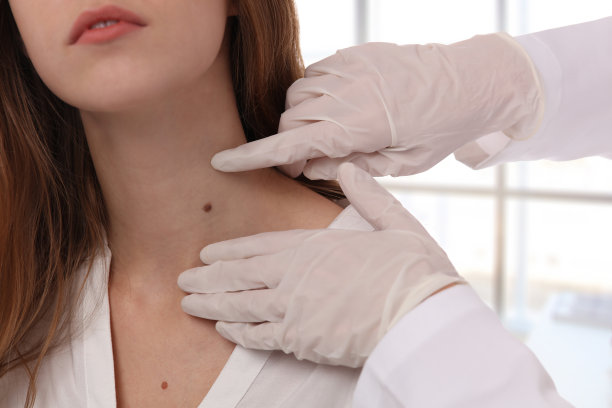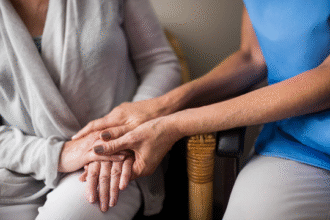Bullous Pemphigoid: An In-Depth Clinical Review
Introduction
Bullous pemphigoid (BP) is the most common autoimmune subepidermal blistering disorder in developed countries, predominantly affecting individuals aged 60 years and older. Characterized by tense bullae arising on erythematous or urticarial skin, BP carries substantial morbidity due to pruritus, potential secondary infections, and treatment-related complications in a frail population. This review provides an expanded, evidence-based overview of BP epidemiology, pathogenesis, clinical variants, diagnostic workup, and comprehensive management strategies.
Epidemiology and Risk Factors
- Incidence & Demographics: Annual incidence ranges from 6–13 cases per million, increasing to >190 per million in patients over 80. Slight male predominance is observed.
- Genetic Associations: HLA-DQB103:01 and HLA-DQA105:05 alleles have been linked to increased susceptibility in some ethnic groups.
- Triggers & Co-morbidities:
- Medications: Dipeptidyl peptidase-4 inhibitors (e.g., sitagliptin), loop diuretics, penicillamine, and antibiotics have been implicated in drug-induced BP.
- Neurological Disorders: Patients with Parkinson’s disease, multiple sclerosis, stroke, or dementia exhibit higher BP prevalence, possibly due to cross-reactive neuronal antigens.
- Radiation & Physical Trauma: Localized BP can develop in areas exposed to radiation therapy, burns, or surgical wounds.
Pathophysiology
- Autoantibody Production: IgG autoantibodies target hemidesmosomal proteins BP180 (type XVII collagen) and BP230.
- Complement Activation: Binding of IgG to the basement membrane activates the classical complement cascade, depositing C3 at the dermal-epidermal junction.
- Inflammatory Recruitment: C3a and C5a recruit neutrophils and eosinophils, whose degranulation releases proteases (e.g., neutrophil elastase, eosinophil peroxidase) that degrade anchoring filaments and cleave dermal-epidermal attachments.
- Blister Formation: The result is a subepidermal cleft and fluid-filled bulla containing eosinophils and neutrophils.
Clinical Variants
- Classic Generalized BP: Widespread tense bullae on erythematous or urticarial bases, intense pruritus.
- Localized BP: Limited to a single anatomical site such as lower limbs or radiation field.
- Urticarial (Prebullous) Stage: Pruritic urticarial plaques without bullae; may precede blisters by weeks.
- Nodular BP: Prurigo-like nodules, often seen on the extremities.
- Bullous Erythema Multiforme: Targetoid lesions with blister formation resembling erythema multiforme.
Clinical Presentation
- Onset: Insidious; pruritus often precedes blister formation by several weeks.
- Lesion Characteristics: Tense, 1–3 cm bullae; negative Nikolsky sign; erosions heal without scarring but may leave postinflammatory hyperpigmentation.
- Distribution: Flexural areas (axillae, groin), lower abdomen, medial thighs, and forearms.
- Mucosal Involvement: Occurs in up to 30% of cases, presenting as painful erosions in the oral, nasal, or genital mucosa.
Diagnostic Workup
- Skin Biopsy and Histopathology:
- Routine H&E: Subepidermal blister with eosinophil-rich infiltrate.
- Direct Immunofluorescence (DIF):
- Findings: Linear deposits of IgG and C3 along the dermal-epidermal junction—diagnostic gold standard.
- Indirect Immunofluorescence (IIF):
- Salt-split Skin: Autoantibodies bind to the epidermal side, distinguishing BP from epidermolysis bullosa acquisita.
- Serologic Assays:
- ELISA: Quantify anti-BP180 NC16A and anti-BP230 antibodies; titers often correlate with disease activity and guide therapeutic tapering.
- Laboratory and Imaging:
- Rule Out Triggers: Review medication history, perform malignancy screening if clinically indicated, and assess neurological comorbidity profile.
Management Strategies
Topical Therapies (Mild/Subgroup Localized BP)
- High-Potency Corticosteroids: Clobetasol propionate 0.05% applied BID to active lesions; can induce remission in localized disease.
- TCS Sparing Options: Tacrolimus 0.1% or pimecrolimus 1% for sensitive areas or long-term maintenance.
Systemic Therapies
- First-Line:
- Oral Corticosteroids: Prednisone 0.5–1 mg/kg/day with a slow taper over 6–12 months to minimize relapse.
- Steroid-Sparing Agents:
- Tetracycline (500 mg BID) + Nicotinamide (500 mg TID): Anti-inflammatory and antioxidant properties; useful in mild-to-moderate disease.
- Immunosuppressants: Azathioprine (1–2 mg/kg/day), mycophenolate mofetil (1–2 g/day), or methotrexate (15–25 mg weekly).
- Advanced/Refractory Cases:
- Rituximab: Two 1 g infusions 2 weeks apart; induction followed by maintenance dosing every 6 months in refractory BP.
- Omalizumab: Anti-IgE monoclonal antibody for steroid-resistant, highly pruritic BP.
- Emerging Agents: IL-17/23 inhibitors, C5a receptor antagonists, and JAK inhibitors under clinical evaluation.
Adjunctive and Supportive Care
- Pruritus Control: Sedating antihistamines (e.g., hydroxyzine), apremilast, and neurokinin-1 receptor antagonists for severe itch.
- Infection Prevention: Antiseptic cleansing, topical antibiotics (mupirocin) for localized superinfection, and systemic antibiotics guided by culture when widespread infection occurs.
- Skin Care: Emollients, gentle cleansers, and avoidance of irritants.
Monitoring and Follow-Up
- Disease Activity: Track clinical scores (BPDAI—Bullous Pemphigoid Disease Area Index), pruritus scales, and ELISA titers every 4–8 weeks.
- Treatment Toxicity: Monitor CBC, liver and renal function, blood glucose, bone density (DXA), and blood pressure in long-term systemic therapy.
- Tapering Protocols: Once disease control is achieved, taper systemic corticosteroids by 5–10 mg every 2–4 weeks, adding or adjusting steroid-sparing agents to maintain remission.
Complications and Prognosis
- Long-Term Remission: Achieved in 60–80% of patients within 18–24 months.
- Mortality Risks: Increased in elderly patients due to comorbidities, sepsis, and treatment-related adverse events.
- Chronic Relapse: Up to 30% experience relapses requiring re-induction therapy.
Patient Education and Multidisciplinary Care
- Teach proper application of topical treatments and early identification of relapse signs.
- Collaborate with geriatrics, neurology, pharmacy, and wound care specialists for holistic management of complex cases.
- Address psychosocial burden: Provide resources for itch coping strategies, support groups, and mental health referrals.
Conclusion
Bullous pemphigoid is a chronic, relapsing autoimmune blistering disorder requiring nuanced clinical evaluation and a personalized, often multimodal therapeutic approach. Advances in targeted biologic and small-molecule therapies offer promise for improved efficacy and safety profiles, emphasizing the importance of multidisciplinary collaboration in optimizing patient outcomes.






